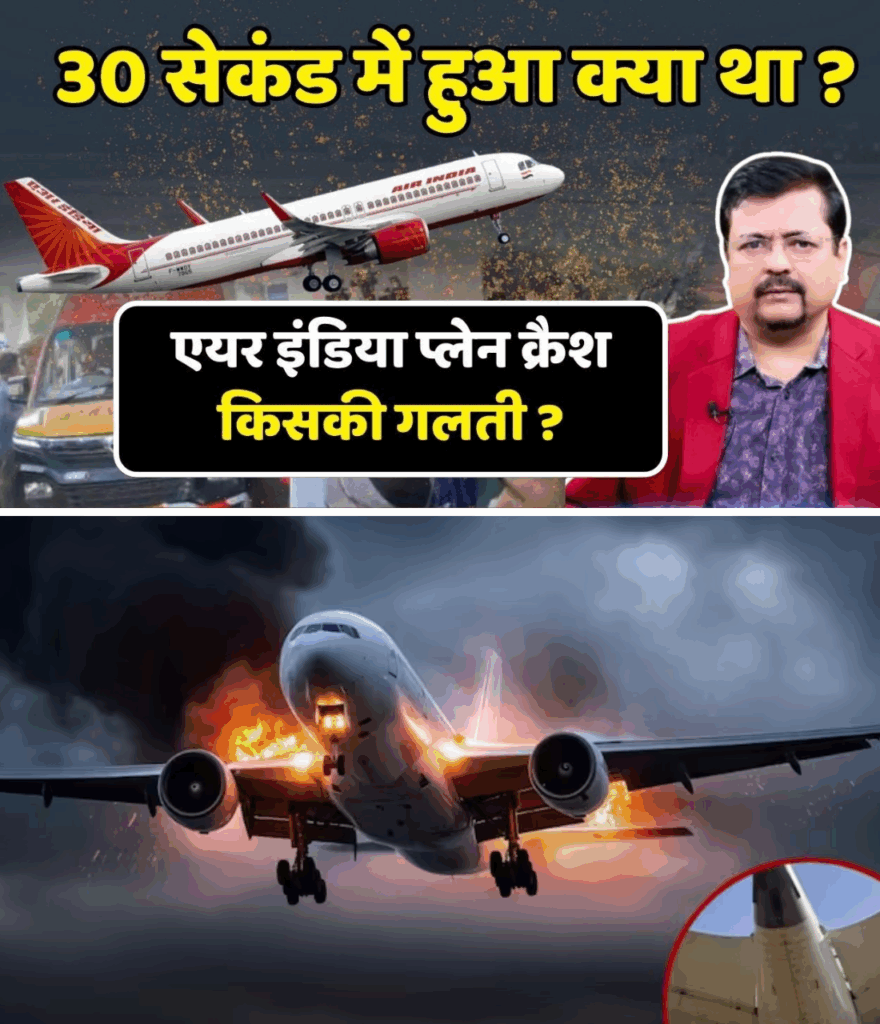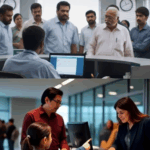The recent crash of an Air India flight departing from Ahmedabad has shocked the nation, marking one of the gravest aviation disasters in recent memory. On behalf of myself and all viewers, heartfelt condolences to the passengers, crew, and pilots who lost their lives in this tragic incident.
The Big Question: Could This Have Been Avoided?
The most pressing question dominating headlines worldwide—whether in Indian media, the BBC, or CNN—is whether this disaster could have been prevented and if the lives of the 242 people onboard could have been saved. Aviation experts, pilots, and analysts from around the world are debating what went wrong.

At the core of the debate are four fundamental questions:
Was There a Pilot Error During Takeoff?
The aircraft, under the command of Captain Sumit Agarwal—one of Air India’s most experienced pilots—ascended to 625 feet but then began to lose altitude. Was there a critical mistake by the pilot during takeoff?
Did Both Engines Fail Due to a Bird Strike?
Ahmedabad airport is known for frequent bird activity. Could both engines have failed because birds got sucked in? Typically, aircraft can fly and land safely even if one engine fails, so did both engines really get disabled by bird strikes? Experts note that bird hits usually only reduce engine performance, not cause a complete shutdown.
Was There a Technical Fault in the Boeing Dreamliner?
The Boeing 787 Dreamliner, introduced in 2011, has an excellent safety record, with over 1,200 planes in service and no previous crashes. Could a technical fault—perhaps in the flight management system or onboard automation—have caused the accident? Boeing insists their aircraft are mechanically sound, but only a thorough investigation will reveal the truth.
Was There Any Sabotage or Conspiracy?
As with many major air disasters, conspiracy theories arise. Was there sabotage? While this theory currently lacks evidence, authorities will examine every possibility, including reviewing cockpit voice recordings and flight data for any suspicious activity.
Investigation Underway
The Directorate General of Civil Aviation (DGCA) and Air India teams have arrived at the crash site in Ahmedabad. They are retrieving and analyzing the Digital Flight Data Recorder (DFDR), which logs all technical parameters, pilot communications, and engine performance. Only after examining this “black box” will investigators be able to definitively answer what went wrong.
Aircraft and Crew Details
The crashed aircraft was a Boeing 787 Dreamliner, operated by Air India since 2014. Captain Sumit Agarwal, a disciplined and highly experienced pilot, was in command, supported by a co-pilot. Experts state that the aircraft was in capable hands, making pilot inexperience an unlikely cause.
Possible Contributing Factors
– Payload and Weight: Experts suggest the aircraft may have been overloaded, affecting its ability to climb after takeoff. The combined weight of fuel, passengers, baggage, and cargo could have exceeded safe limits, especially given the hot summer weather, which further reduces lift.
– Bird Strike: While possible, it is rare for both engines to be disabled by birds simultaneously.
– Technical Failure: Only the DFDR analysis can confirm if a mechanical or software failure was involved.
– Sabotage: Currently, there is no evidence to support this theory, but investigators are not ruling anything out.
As the investigation continues, the aviation community awaits answers. The crash has dealt a significant blow to Boeing’s reputation, as this is the first Dreamliner crash globally. Only after a thorough review of flight data and expert analysis will it be clear whether the tragedy was due to human error, technical failure, or other factors.
Once again, heartfelt condolences to all those who lost loved ones in this disaster. For further updates and analysis, stay tuned. If you have questions or observations, please share them in the comments.
News
दिल्ली के मॉल की कहानी: इंसानियत की असली कीमत
दिल्ली के मॉल की कहानी: इंसानियत की असली कीमत शाम के करीब 7:00 बजे थे। दिल्ली के एक बड़े मॉल…
जिले की डीएम की माँ और बैंक की सीख: एक प्रेरणादायक कहानी
जिले की डीएम की माँ और बैंक की सीख: एक प्रेरणादायक कहानी जिले की सबसे बड़ी अफसर डीएम नुसरत की…
सुबह की ताज़ी हवा में मिठास थी। गांव के बाहर सब्ज़ी मंडी में रोज़ की तरह हलचल शुरू हो चुकी थी। आवाजें
सुबह की ताज़ी हवा में मिठास थी। गांव के बाहर सब्ज़ी मंडी में रोज़ की तरह हलचल शुरू हो चुकी…
लखनऊ एयरपोर्ट पर एक बुजुर्ग की गरिमा की कहानी
लखनऊ एयरपोर्ट पर एक बुजुर्ग की गरिमा की कहानी सुबह के आठ बजे थे। लखनऊ इंटरनेशनल एयरपोर्ट पर रोज़ की…
सर्दियों की एक सुबह की कहानी
सर्दियों की एक सुबह की कहानी सर्दियों की ठंडी सुबह थी। सूरज की किरणें अभी पूरी तरह ज़मीन को नहीं…
दो दोस्तों की कहानी – वक्त, फासले और दोस्ती की पहचान
दो दोस्तों की कहानी – वक्त, फासले और दोस्ती की पहचान दिल्ली के एक छोटे से गाँव में नईम और…
End of content
No more pages to load






